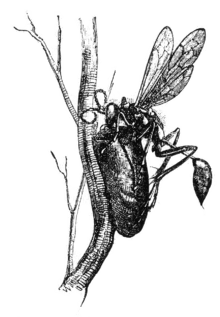Albertus Seba

Albertus Seba (May 12, 1665, Etzel near Friedeburg – May 2, 1736, Amsterdam) was a Dutch pharmacist, zoologist and collector.
Career
Born in Etzel, Seba moved to Amsterdam as an apprentice and, around 1700, opened a pharmacy near the harbour. Seba asked sailors and ship surgeons to bring exotic plants and animal products he could use for preparing drugs. Seba also started to collect snakes, birds, insects, shells and lizards in his house.
From 1711 he delivered drugs to the Russian court in Saint Petersburg and sometimes accepted fresh ginger as payment. Seba promoted his collection with the head-physician to Peter the Great, Robert Erskine (1674–1719), and in early 1716 Peter the Great bought the complete collection. However, in the following several years, Seba managed to develop another collection of natural specimens.
With Seba as an intermediate, Frederik Ruysch, a well-known Amsterdam physician and anatomist, also sold his collection to the tsar. Both collections formed the core of the Kunstkammer, the first Russian public museum founded by Peter the Great in 1712. Later, in 1728, when a special museum building was designed and built, both collections, along with many other exhibits, were displayed there.

In October 1728 Seba had become a Fellow of the Royal Society. In 1734, he had published a Thesaurus of animal specimens with beautiful engravings. The full name of the Thesaurus is, with a dual Latin–Dutch title, Locupletissimi rerum naturalium thesauri accurata descriptio – Naaukeurige beschryving van het schatryke kabinet der voornaamste seldzaamheden der natuur (Accurate description of the very rich thesaurus of the principal and rarest natural objects). The last two of the four volumes were published after his death (1759 and 1765). Today, the original 446-plate volume is on permanent exhibit at the Koninklijke Bibliotheek in The Hague, Netherlands. Recently, a complete example of the Thesaurus sold for US $460,000 at an auction. In 2001, Taschen Books published a reprint of the Thesaurus, with a second printing in 2006.
In 1735 Linnaeus visited him twice. Seba's collection became a basis on which he started to develop his classification system.
In 1752, several years after Seba's death, his second collection went on auction in Amsterdam. Several objects were purchased by the Petersburg Academy of Sciences.
Gallery
-

Frontispiece of the Thesaurus by Frederik Ruysch (Thesaurus animalium primus) by C.Huybrechts (1710)
-

Engraving depicting different views of the hedgehog in the Thesaurus
-

The Hamburg Hydra, from the Thesaurus (1734)
References
- Driessen, J. (1996) Tsaar Peter de Grote en zijn Amsterdamse vrienden.
- Driessen-Van het Reve, J.J. (2006) De Kunstkamera van Peter de Grote. De Hollandse inbreng, gereconstrueerd uit brieven van Albert Seba en Johann Daniel Schumacher uit de jaren 1711–1752.
- Holthuis, L.B. (1969) Albertus Seba's „Locupletissimi rerum naturalium thesauri...." (1734–1765) and the „Planches de Seba" (1827–1831), Zoologische Mededelingen, Vol. 43, pp. 239–252 PDF
External links
| Wikimedia Commons has media related to Albertus Seba. |
- Locupletissimi rerum naturalium thesauri
- Volume 1, Botanicus
- Volume 1, Göttinger Digitalisierungszentrum
- Volume 3, Digital Library at Gdansk University of Technology
- Volume 4, Göttinger Digitalisierungszentrum
- Cabinet of Natural Curiosities, Catalogue entry for Seba's Cabinet of Natural Curiosities
- Cabinet of curiosities Web page of the Koninklijke Bibliotheek on the Thesaurus exhibition
- Review of thesauri by Claudia Stein, Medical History
- A Cabinet of Natural Curiosities scanned images from Locupletissimi rerum naturalium thesauri. Botanicus.
- Sale and dispersal of the Seba collection
